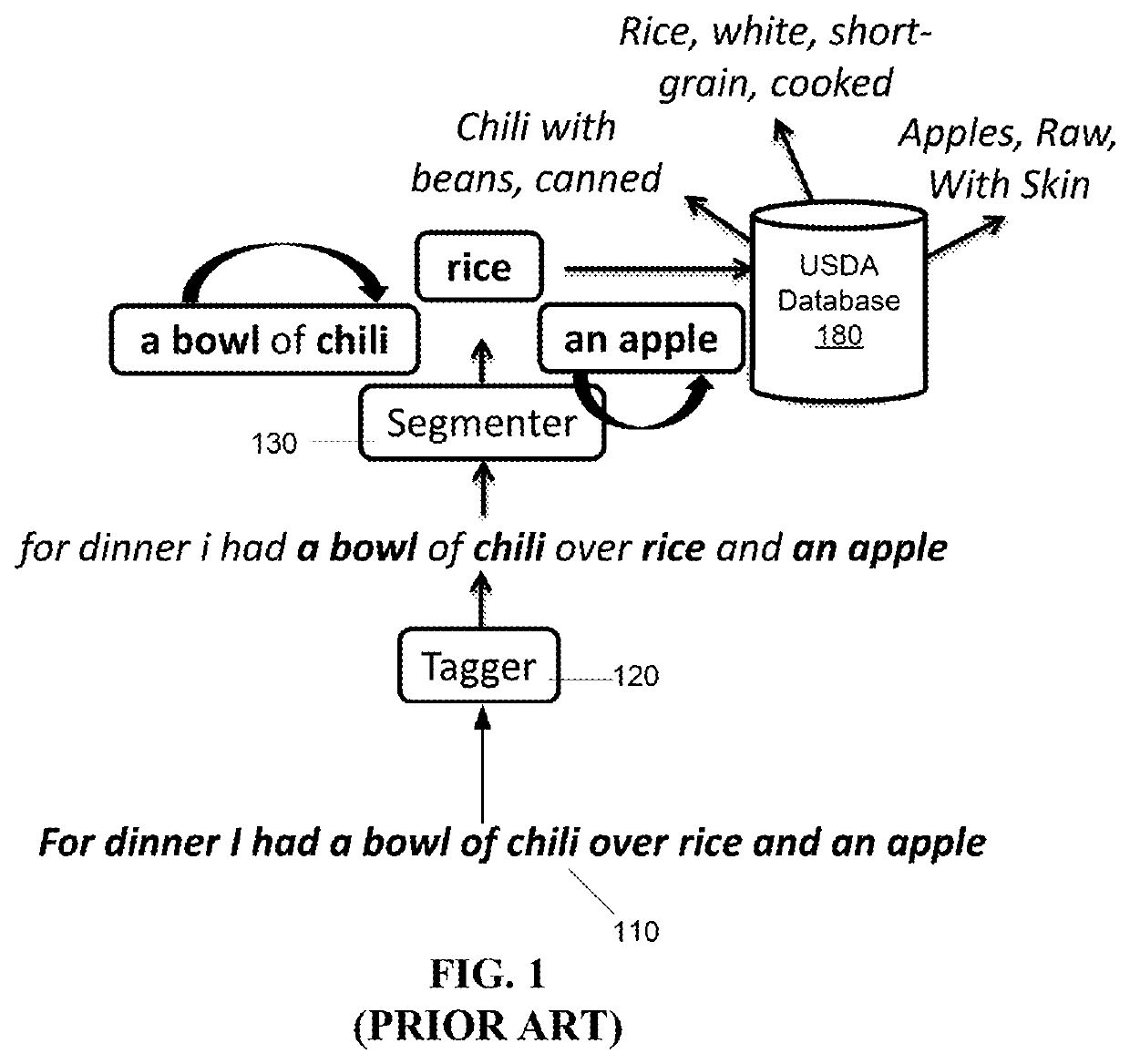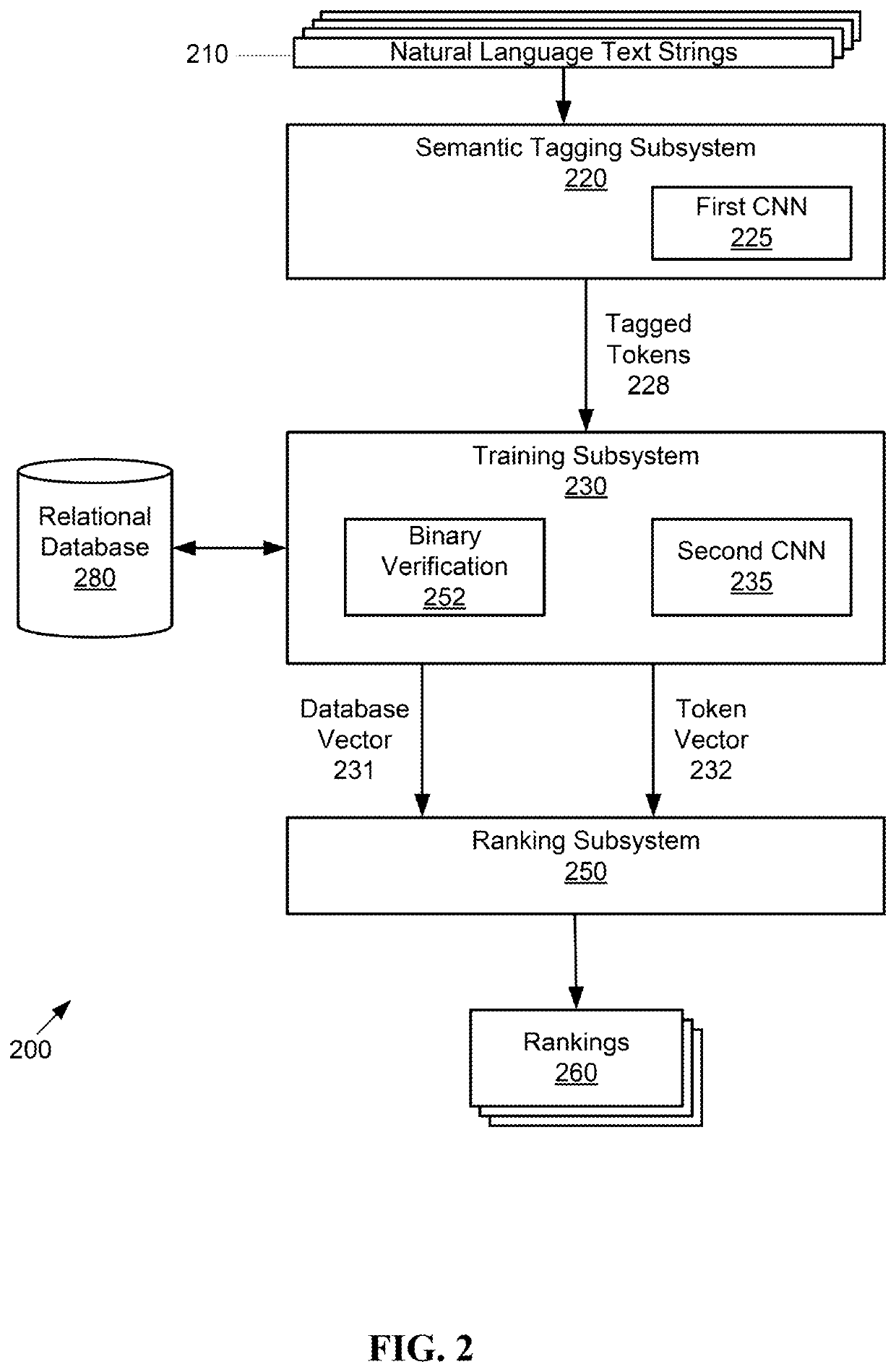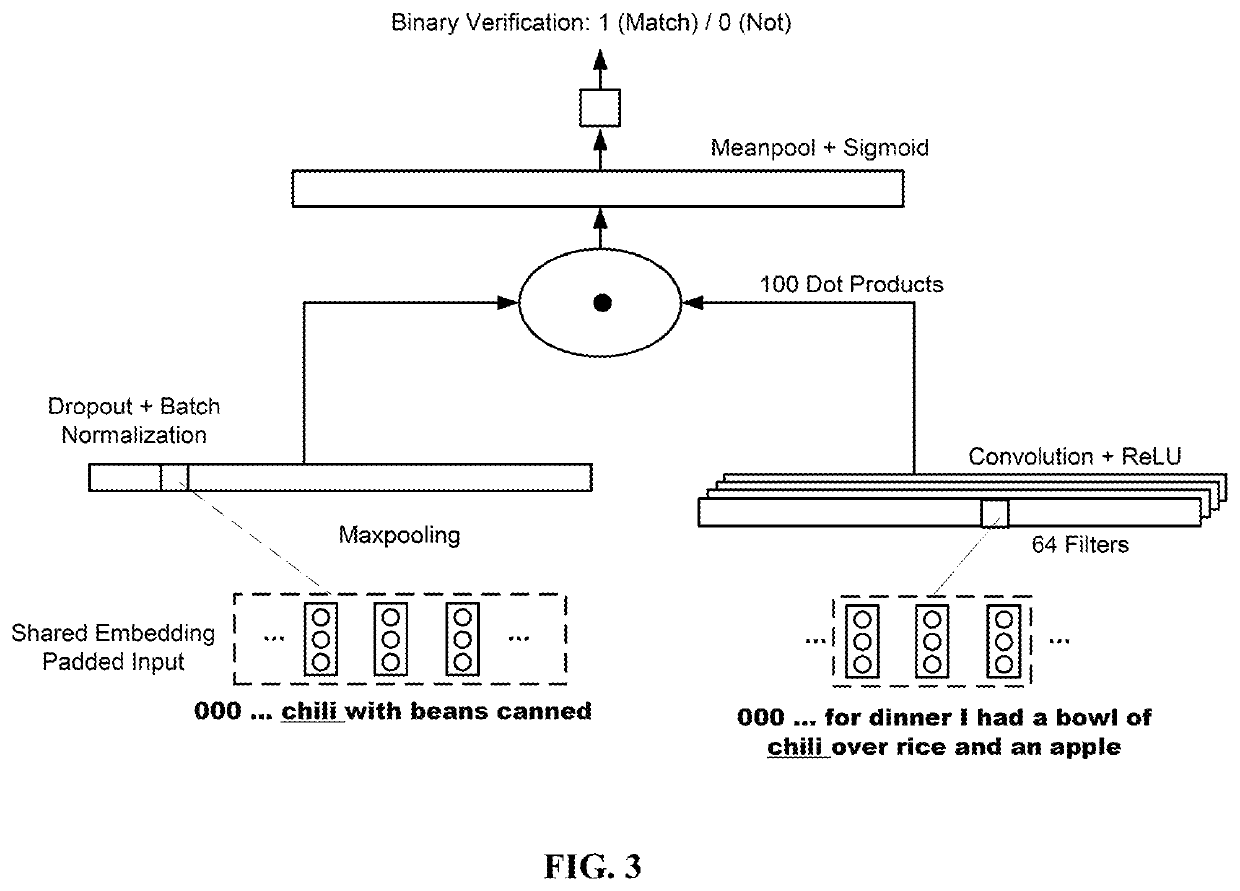System and method for semantic mapping of natural language input to database entries via convolutional neural networks
a convolutional neural network and natural language technology, applied in the field of text processing, can solve the problems of insufficient performance of a system using n-best decoding and finite state transducer to directly map from natural language input to the best database entry without intermediate steps,
- Summary
- Abstract
- Description
- Claims
- Application Information
AI Technical Summary
Benefits of technology
Problems solved by technology
Method used
Image
Examples
Embodiment Construction
[0016]The following definitions are useful for interpreting terms applied to features of the embodiments disclosed herein, and are meant only to define elements within the disclosure.
[0017]As used within this disclosure, a token refers to a data structure characterizing a portion of a text string. Similarly, “tokenizing” refers to receiving a text string and providing a set of associated tokens to words, phrases, or a portion of a word or phrase. A token may be associated with one or more labels indicating a property, via a process referred to as “tagging” and / or “semantic tagging.” Tokens related according to a property may be grouped to form a “segment.”
[0018]As used within this disclosure, “embedding” generally refers to the process of creating an embedded vector representation of a text string. It should be noted that “word embedding” refers to an embedded vector representation of a single word or token (which embodiments described below may learn in the first layer of a first n...
PUM
 Login to View More
Login to View More Abstract
Description
Claims
Application Information
 Login to View More
Login to View More - R&D
- Intellectual Property
- Life Sciences
- Materials
- Tech Scout
- Unparalleled Data Quality
- Higher Quality Content
- 60% Fewer Hallucinations
Browse by: Latest US Patents, China's latest patents, Technical Efficacy Thesaurus, Application Domain, Technology Topic, Popular Technical Reports.
© 2025 PatSnap. All rights reserved.Legal|Privacy policy|Modern Slavery Act Transparency Statement|Sitemap|About US| Contact US: help@patsnap.com



